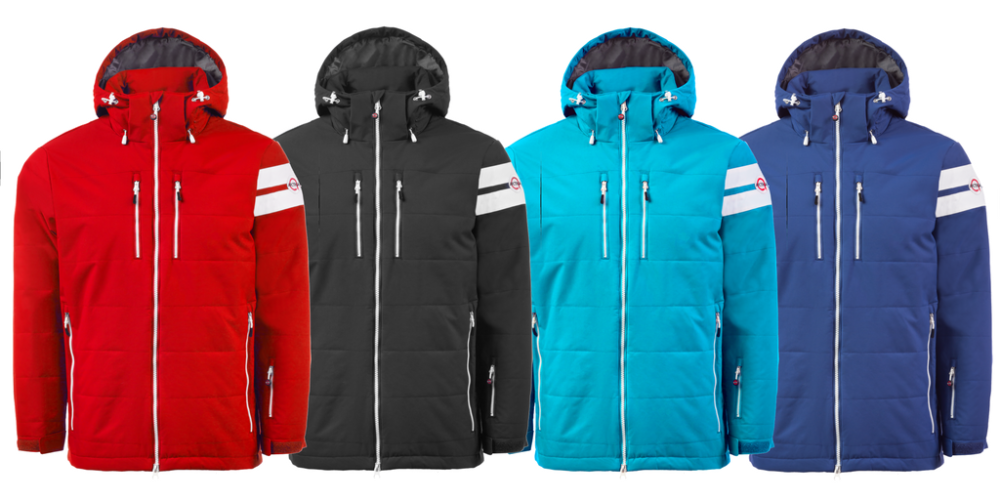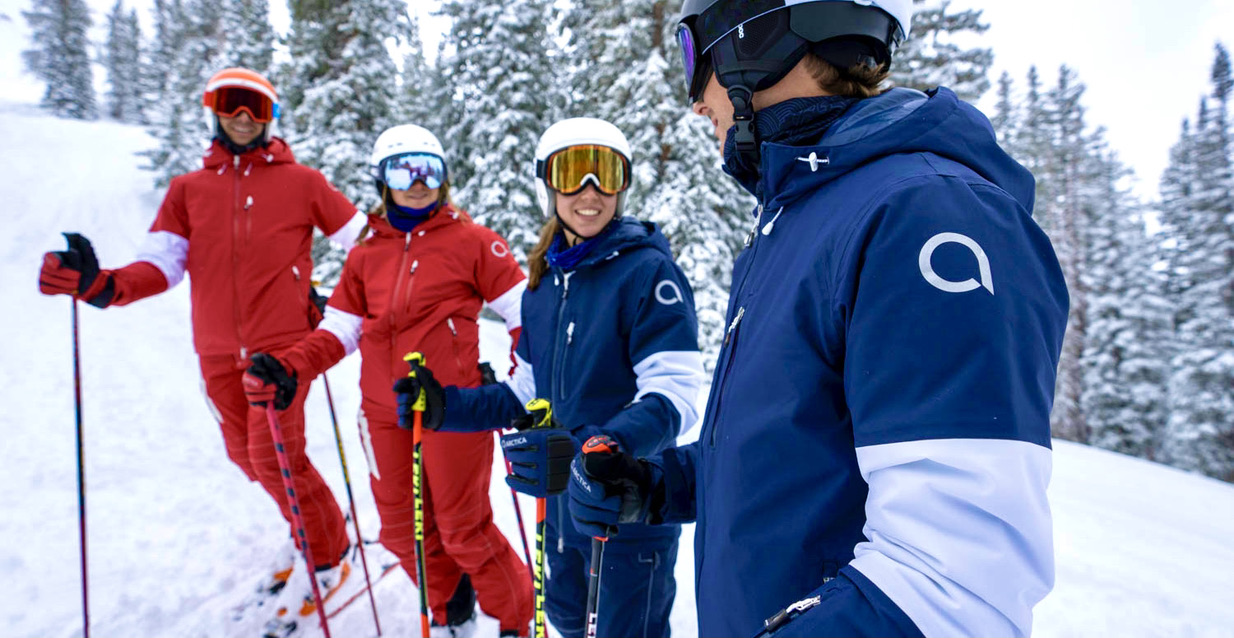The ski industry utilizes high performance synthetic insulation with brand names like Thinsulate™, Primaloft®, and Polartec®. In addition, many ski outerwear companies use their own proprietary performance insulation. Manufacturers formulate proprietary insulation to be very similar to the brand name products, without the big brand name cost. Arctica has three proprietary synthetic high performance insulations. They are called Heat 40, Heat 80 and Heat 100. Here’s a little more information about our proprietary insulation to help you decide what is best for your needs.
How performance insulation works
Synthetic insulations are typically polyester. They are made up of either fine denier short staple fibers or continuous filaments that are densely packed together to create a sheet (or batt) of fibers that trap air. The insulation traps air that has been warmed by your body between the fibers. In addition, it also minimizes heat loss.
The thickness of these fiber batts is called loft. The loft of synthetic insulation is measured by weight in grams per square meter. So thicker insulation (with more loft) weighs more per square meter, has a higher gram-weight number, and is usually warmer. The more loft, or puffier insulations, consist of more air and offer greater warmth to weight ratio. Insulation is categorized as thin loft, mid-loft or high loft. Arctica utilizes thin loft and mid loft insulations in our insulated products. That is the industry standard for skiing apparel.

A mid loft polyester high performance insulation
Thin Loft
In general, 40g – 80g of insulation is considered thin loft insulation. It is on the thinner, lighter end of the insulation scale and is typically found in mid-layer pieces, or pieces that are intended to be layered. Both Arctica Heat 40 and Heat 80 are in this category. Although, with 80g of insulation, the Heat 80 could also be considered mid-loft.
We use Heat 40 in our Race Capes. And Heat 80 in our Warm Up Coat and Speed Freak Jackets. Since our Speed Freak Jacket is treated with a durable water repellent (DWR) it does work well as an outer layer too. The Patagonia Nano Puff Hoody and The North Face ThermBall Hoody are two other well known jackets in the thin loft insulation category. All of these pieces are great for spring and fall by themselves or for use as a layering piece in winter.
Mid Loft
Typically, 80g – 100g of insulation falls into the mid-loft category. Medium loft insulation is the industry standard for ski parkas. The Arctica Comp Jacket utilizes our mid-loft Heat 100 insulation. With 100g of synthetic insulation, this jacket is the warmest synthetic insulation jacket in the line. For someone looking for a more performance oriented jacket, Arctica’s tech jackets, the Targa and GT Jackets utilize our Heat 80 insulation for more breathability. For comparison, other popular ski jackets that utilize mid-loft high performance insulation are the Spyder Leader and the Orage Nina.
High Loft
Anything with 150g or more of synthetic insulation is considered a high loft insulation. This is far too warm for a high aerobic activity like skiing. Therefore, we do not have any jackets that utilize this amount of synthetic insulation. A good example of this is is the Patagonia DAS Parka. It utilizes 120g of Primaloft Silver Hi-Loft, beefed up with an additional 60g of Primaloft Gold in the torso. A jacket like this is meant for ice climbing or belaying/mountaineering in frigid temperatures. Consequently, it is considered too “bulky and heavy” for most applications.
What do you need?
There are few jackets that can be everything to everyone. Some insulations are designed to focus on breathability and comfort for high energy use. Others are designed to maximize warmth and weather resistance. If you are looking for a ski jacket that will work well year ’round – as outerwear in spring and fall and on winter days that are above freezing – the Speed Freak is for you. And if you need a jacket that has more insulation and water resistance, go with the Arctica Comp jacket. Finally, if you need a top-of-the-line technical performance jacket, get the Arctica GT Jacket. Once you have determined your needs, hopefully we have given you the tools you need to choose the best jacket that meets them.
Editor’s Note: This is part 2 of 2 of our explanation of Arctica’s technical, performance fabrics and high performance insulation. For information about our fabrics please read Arctica Fabrics: Glossary of Terms.





Leave a Comment